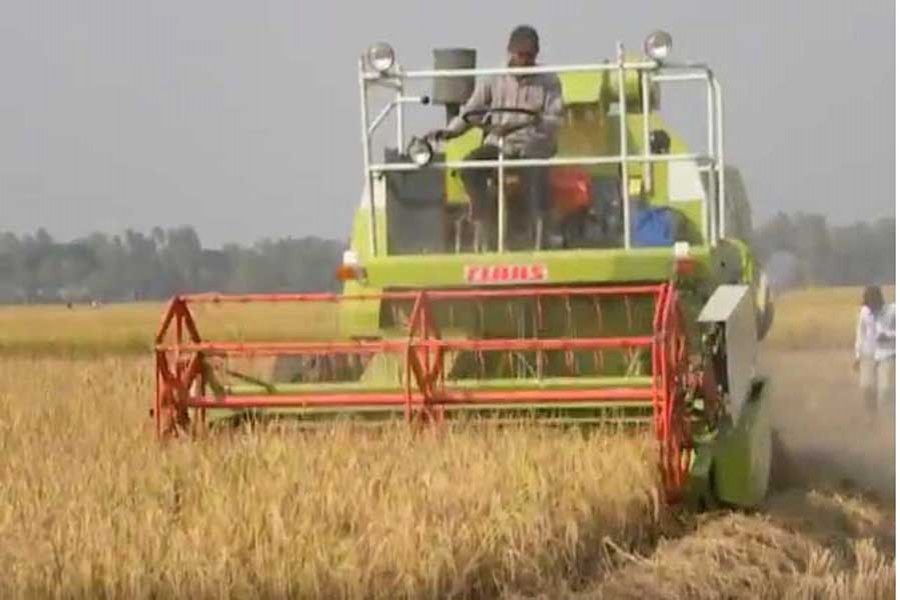
Published :
Updated :

It is important to note that the government has decided to address the problem of shortage of farm labourers that has been largely responsible for high cost of production of crops, cash or otherwise. The shortage of farm labourers has emerged as a serious problem in recent years. The high wages that farmhands demand during the harvesting or sowing seasons, among others, have been pushing up the cost of production of farm produce at the growers' level. The problem turned out to be serious during the Boro harvesting time this year. In many places, farm owners or sharecroppers could not manage sufficient number of farm labourers to get their produce harvested on time.
This year the government, rightly or wrongly, finds itself at the receiving end of criticism for the falling paddy prices. The reasons behind a notable decline in paddy prices during the current Boro harvesting season are quite a few and some of those are man-made and deliberate. But what is hurting the small and marginal farmers is the large gap between the cost of production of Boro paddy and the selling price of the same. It does usually happen in the event of bumper production of any crop. The 'peril of plenty' phrase, thus, turns out to be true for them in such a situation.
For the sake of its own survival, the peasantry would either have to cut back on the cost of production, be it food crop or anything else, or have the government ensure fair prices for their produce. Getting the second option implemented remains a difficult task under the given circumstances. So, the growers do need to look towards the first option. Since farmhands are now in short supply and their wages are also soaring, it is high time both farmers and policymakers took the issue of farm mechanisation seriously.
In fact, machines, namely, tractors and power tillers, are now playing a big role in country's agriculture. These machines made their slow and steady entry into the farming arena since early part of 1980s with draught animals becoming scarce across the country. Machines in limited scale are also in use in the processing of agriculture produce. The ongoing farm mechanisation, however, comes in contrast to the past worries that the use of machines would create employment crisis for farm labourers. Such concerns are no more valid and farm mechanisation has become a necessity now.
Machines are relatively expensive and small and marginal farmers can hardly afford their use. So, farm mechanisation in the context of Bangladesh has a supportive aspect and this issue needs a serious consideration by the policymakers. The agriculture minister the other day revealed a government plan under which the relevant agencies would spend Tk.30 billion on farm mechanisation. He, however, did not elaborate the plan -- how and where the money would be spent.
Yet it is a welcome piece of news. The presence of efficient farm-level cooperative societies could have played an important role in areas of farm mechanisation. Unfortunately, the cooperatives have failed to pick up in this country like many other institutions for a host of reasons, including corruption. Yet the government should try to devise some effective mechanism to make the use of farm machines affordable by small and marginal farmers. In addition, for the greater good of agriculture and peasantry, rural economy needs to be geared up viably so that farmhands are not required to migrate to towns and cities in search of off-season employment and end up in slums there, permanently.


 For all latest news, follow The Financial Express Google News channel.
For all latest news, follow The Financial Express Google News channel.